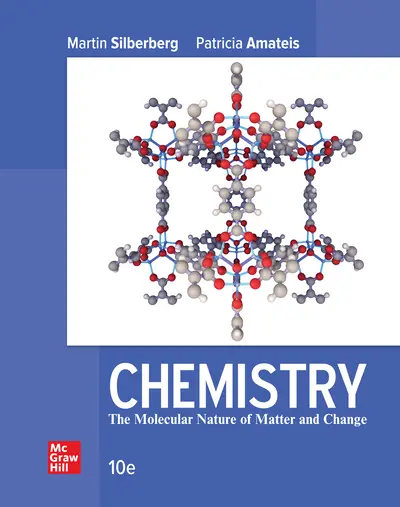My Account Details

ISBN10: 1266199233 | ISBN13: 9781266199233

* The estimated amount of time this product will be on the market is based on a number of factors, including faculty input to instructional design and the prior revision cycle and updates to academic research-which typically results in a revision cycle ranging from every two to four years for this product. Pricing subject to change at any time.
Instructor Information
Quick Actions (Only for Validated Instructor Accounts):
Chemistry: The Molecular Nature of Matter and Change maintains its standard-setting position among general chemistry textbooks by evolving further to meet the needs of professor and student. The text still contains the most accurate molecular illustrations, consistent step-by-step worked problems, and an extensive collection of end-of-chapter problems. And changes throughout this edition make the text more readable and succinct, the artwork more teachable and modern, and the design more focused and inviting. The three hallmarks that have made this text a market leader are now demonstrated in its pages more clearly than ever.
Chapter 1. Keys to the Study of Chemistry: Definitions, Units, and Problem Solving
Chapter 2. The Components of Matter
Chapter 3. Stoichiometry of Formulas and Equations
Chapter 4. Three Major Classes of Chemical Reactions
Chapter 5. Gases and the Kinetic-Molecular Theory
Chapter 6. Thermochemistry: Energy Flow and Chemical Change
Chapter 7. Quantum Theory and Atomic Structure
Chapter 8. Electron Configuration and Chemical Periodicity
Chapter 9. Models of Chemical Bonding
Chapter 10. The Shapes of Molecules
Chapter 11. Theories of Covalent Bonding
Chapter 12. Intermolecular Forces: Liquids, Solids, and Phase Changes
Chapter 13. The Properties of Mixtures: Solutions and Colloids
Chapter 14. Periodic Patterns in the Main-Group Elements
Chapter 15. Organic Compounds and the Atomic Properties of Carbon
Chapter 16. Kinetics: Rates and Mechanisms of Chemical Reactions
Chapter 17. Equilibrium: The Extent of Chemical Reactions
Chapter 18. Acid-Base Equilibria
Chapter 19. Ionic Equilibria in Aqueous Systems
Chapter 20. Thermodynamics: Entropy, Free Energy, and Reaction Direction
Chapter 21. Electrochemistry: Chemical Change and Electrical Work
Chapter 22. The Elements in Nature and Industry
Chapter 23. Transition Elements and Their Coordination Compounds
Chapter 24. Nuclear Reactions and Their Applications
Accessibility
Creating accessible products is a priority for McGraw Hill. We make accessibility and adhering to WCAG AA guidelines a part of our day-to-day development efforts and product roadmaps.
For more information, visit our accessibility page, or contact us at accessibility@mheducation.com
Need support? We're here to help - Get real-world support and resources every step of the way.